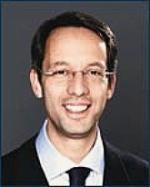In relation to the application by Protecting Kids the World Over (PKTWO) [2011] EWHC 2720 (Pat), the High Court of England and Wales has allowed an appeal against a decision of a Hearing Officer that found that an alarm notification system for monitoring inappropriate electronic communications fell within the computer program exclusion.
BACKGROUND
PKTWO applied to register a system for monitoring the content of electronic communications to ensure that children are not exposed to inappropriate content. The system as claimed analyses data sampled from a communication channel. Where the data is judged to be of concern, the user of the system—the child’s parent—can be notified by email or text message and by reply can send a remote response command either to terminate the electronic communication or to completely shut down the computer.
The Hearing Officer held that the invention was excluded from patentability because it related to a computer program and to a method of performing a mental act as such. PKTWO appealed to the High Court, submitting that the contribution its invention made to the state of the art had been ignored. Just before this hearing, the Comptroller withdrew the mental act exclusion and only put forward the computer program exception.
DECISION
Floyd J began by referring to the exclusion found in Article 54 of the European Patent Convention (and Section 1(2) of the Patents Act 1977) against the patentability of computer programs “as such”. He then turned to the wealth of case law on the interpretation of this exclusion, including the four step approach from Aerotel v Telco/Macrossan’s Patent Application [2007] RPC 7 that should be applied in such cases:
1. Properly construe the claim
2. Identify the actual contribution
3. Ask whether it falls solely within the excluded subject matter
4. Check whether the actual or alleged contribution is actually technical in nature.
In identifying the actual contribution made by the invention, Floyd J observed that Aerotel required that when considering the invention “as a whole”, this contribution had to be to the effect that the invention added something to human knowledge. He then went on to ascertain whether the contribution made was technical, as this had to be the case before the requirements for patentability could be met, by applying the approach set out in AT&T Knowledge Ventures [2009] EWHC 343. Furthermore, Floyd J observed that Gemstar-TV Guide International Inc v Virgin Media Ltd [2010] RPC 10 required this technical contribution to achieve a physical effect or activity as opposed to being abstract, such as simply making something “better” or producing a different display.
Applying these principles, Floyd J held that the contribution made by the claim at issue was that a more rapid and reliable alarm notification was generated. While this was not new, the particular way in which the notification was sent, i.e., sending messages to the user by email or text, was not known in the existing art and was technically superior to other known forms of notification. He held that it therefore contributed to human knowledge. He added that the invention when viewed as a whole improved the way electronic content was monitored and was therefore technical, albeit outside the computer. He held that because of this, the invention had the necessary characteristics of a technical contribution that was superior to that produced by the prior art, and therefore did not fall wholly within the exclusion. The appeal was allowed.
COMMENT
Although there is no shortage of authority on the subject of computer programs, this ruling is a reminder of how difficult it can be to navigate these issues with any certainty. The question of determining whether the contribution is technical is by far the most difficult to answer and each case has to be decided based on its own particular facts and features, using the guidelines in the case law. What this case does not address is the tension between the European Patent Office approach and the UK approach to the exclusion.



 />i
/>i

